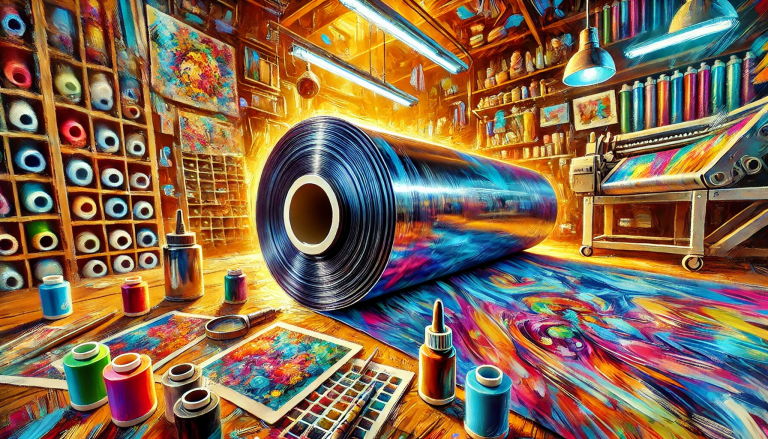In the ever-evolving world of fabric printing, Direct to Film (DTF) technology has emerged as a game-changer, offering unparalleled flexibility, efficiency, and quality. Among its various forms, the DTF Transfer Film Matte finish has become particularly popular for its unique aesthetic appeal and practical benefits. This article delves into the world of DTF Transfer Film Matte, exploring its technology, advantages, applications, and how it’s transforming the fabric printing industry.
The Technology Behind DTF Transfer Film Matte
Direct to Film printing involves printing a design onto a special film and then transferring it onto fabric. This process comprises several key steps: printing the design onto a matte transfer film, applying a powder adhesive, melting the adhesive, and then pressing the film onto the fabric. What sets the matte finish apart is its non-reflective surface, offering a distinctive, sophisticated look that’s highly sought after in the fashion and interior design industries.
The core of this technology lies in its ability to produce high-quality prints with incredible detail and color fidelity. Unlike traditional fabric printing methods, DTF does not require pre-treated fabrics or a weeding process, making it more versatile and efficient. The matte finish film specifically enhances the final product’s appearance by providing a subtle, elegant surface that diffuses light rather than reflecting it.
Advantages of DTF Transfer Film Matte
The DTF Transfer Film Matte finish offers several advantages over glossy finishes and traditional printing methods. One of the most notable benefits is its aesthetic appeal. The matte finish provides a more understated, classy look that’s perfect for high-end fashion, home decor, and branding materials. It does not show fingerprints or smudges, maintaining a clean, professional appearance.
From a practical standpoint, the matte finish is less susceptible to scratches and scuffs, enhancing the durability of the printed product. This makes it an ideal choice for items that undergo frequent handling or use, such as clothing, bags, and upholstery. Moreover, the non-reflective surface of the matte film ensures that designs are visible from all angles, even under bright lighting, enhancing visibility and impact.
Applications of DTF Transfer Film Matte
The versatility and aesthetic qualities of DTF Transfer Film Matte make it suitable for a wide range of applications. In the fashion industry, it’s used for printing intricate designs on t-shirts, hoodies, jackets, and accessories, allowing designers to achieve a premium look without the high costs associated with traditional printing methods. The interior design sector also benefits from this technology, using it to create custom fabrics for upholstery, curtains, and decorative items, adding a touch of elegance to any space.
Moreover, the branding and marketing industries have adopted DTF Transfer Film Matte for creating promotional items, uniforms, and packaging. The matte finish ensures that logos and messages stand out, making it an effective tool for brand visibility and recognition.
Transforming the Fabric Printing Industry
The introduction of DTF Transfer Film Matte is revolutionizing the fabric printing industry by offering an efficient, versatile, and high-quality printing solution. Its ability to print on a wide variety of fabrics without pre-treatment or weeding reduces production times and costs, making it accessible to businesses of all sizes. Additionally, the environmental benefits of DTF printing, such as reduced waste and the use of eco-friendly inks, align with the growing demand for sustainable practices in the textile industry.
The future of fabric printing looks bright with DTF Transfer Film Matte leading the way. As technology continues to evolve, we can expect further improvements in print quality, efficiency, and sustainability. This innovative printing method is not just a trend but a transformational shift in how we create and enjoy printed fabrics, opening up endless possibilities for designers, manufacturers, and consumers alike.
In conclusion, DTF Transfer Film Matte is more than just a printing technique; it’s a catalyst for innovation and creativity in the fabric printing industry. Its combination of aesthetic appeal, practical benefits, and versatility makes it a preferred choice for a wide range of applications. As we move forward, it’s clear that DTF Transfer Film Matte will continue to play a pivotal role in shaping the future of fabric printing, offering endless possibilities for customization and design.



